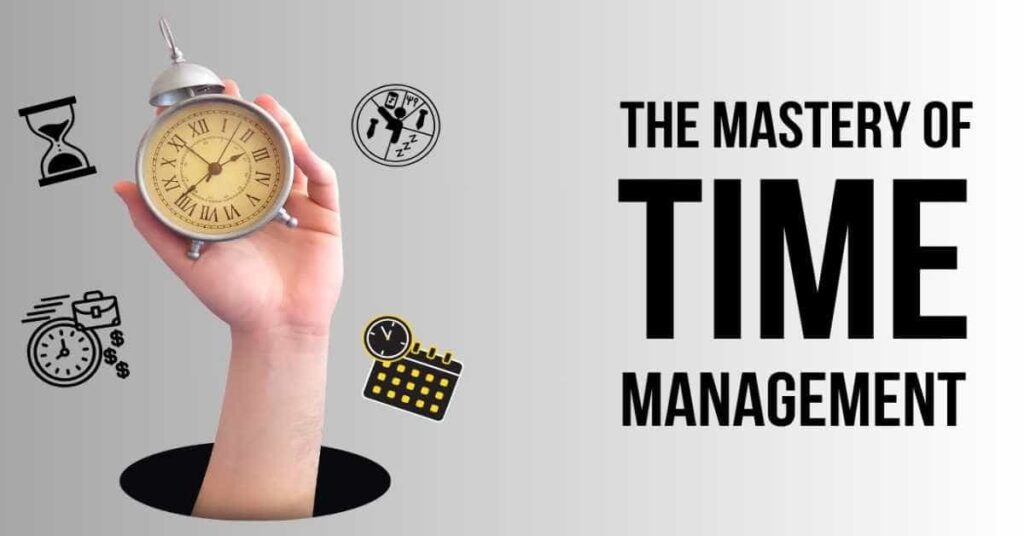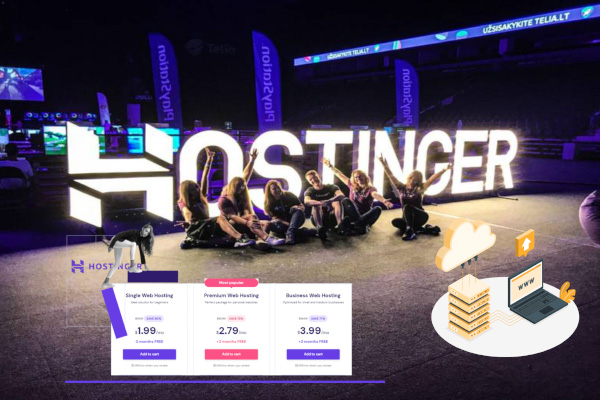1. Understanding the time managment.
1.1 Definition and Significance of Time Management
This subsection establishes a clear definition of time management, emphasizing its role in optimizing the use of time for increased productivity and goal achievement.
Significance in Personal and Professional Life:
Time management isn’t confined to the workplace; it extends to every aspect of life. We discuss how effective time management is a universal skill, impacting both personal and professional spheres.
1.2 The Impact of Effective Time Management on Productivity
Productivity is not merely about doing more; it’s about doing the right things at the right time. Effective time management is the linchpin of productivity, enabling individuals to prioritize tasks, set achievable goals, and ultimately accomplish more in less time.
This subsection explores the direct correlation between mastering time management and unlocking unparalleled productivity.
1.3 Common Challenges in Managing Time Effectively
Procrastination: It is a common hurdle in effective time management. This subsection examines the roots of procrastination, the psychology behind it, and practical strategies to overcome this pervasive challenge.
Interruptions and Distractions: In a world filled with constant distractions, staying focused can be challenging. We discuss common interruptions and distractions, offering strategies to mitigate their impact and maintain concentration.
Lack of Prioritization: Failing to prioritize tasks can lead to a scattered approach to time management. Here, we explore the consequences of not prioritizing effectively and provide insights into developing a prioritization mindset.
Understanding the foundational concepts and challenges of time management lays the groundwork for individuals to navigate the complexities of their schedules. By grasping the psychological nuances of time perception and recognizing common pitfalls, individuals can approach time management with a holistic and informed perspective.
2. The Foundations of Effective Time Management
Time management is an art that begins with mastering the fundamental principles that underpin its effectiveness. In this section, we delve into the core foundations that serve as the building blocks for strategic time management, providing a solid framework for individuals seeking to optimize their use of time.
2.1 Setting SMART Goals
Specific: Defining clear and specific objectives is the cornerstone of effective time management. This subsection explores the importance of articulating goals in precise terms, ensuring a focused and targeted approach to time allocation.
Measurable: Assessing progress is crucial to remain on course and sustain motivation. Here, we discuss the significance of setting measurable goals, allowing individuals to gauge their achievements and adjust their strategies accordingly.
Achievable: Unrealistic goals can lead to frustration and inefficiency. This subsection explores the concept of achievable goals, guiding readers on how to set objectives that are challenging yet within their capabilities.
Relevant: Aligning goals with broader objectives ensures that time is spent on tasks that truly matter. We delve into the importance of relevance in goal-setting, helping individuals prioritize activities that contribute to their overall success.
Time-bound: Time constraints add a sense of urgency and structure to goal-setting. This section discusses the crucial element of time-bound goals, emphasizing the need for deadlines to drive motivation and focus.
2.2 Prioritization Techniques
Eisenhower Matrix: Named after President Dwight D. Eisenhower, this matrix is a powerful tool for categorizing tasks based on urgency and importance. We explore how this technique aids in making informed decisions about task prioritization.
ABCD Method: Assigning letters to tasks based on their priority allows for a systematic approach to time management. This subsection outlines the ABCD method and how it helps individuals focus on what truly matters.
Pareto Principle (80/20 Rule): The Pareto Principle posits that 80% of results come from 20% of efforts. We discuss how understanding and applying this rule enables individuals to identify and focus on the most impactful tasks, maximizing their efficiency.
2.3 Creating a Time Management Plan
Daily, Weekly, and Monthly Planning: Effective time management involves planning at different time scales. We explore the benefits of daily, weekly, and monthly planning, providing practical tips for creating schedules that accommodate both short-term tasks and long-term goals.
Allocating Time for Tasks and Activities: Time is a limited resource, and allocating it wisely is key to success. This section guides readers on how to allocate time for various tasks and activities, ensuring a balanced and structured approach to their daily routines.
By mastering these foundational principles, individuals lay the groundwork for a comprehensive and effective time management strategy. The journey towards time management mastery begins with understanding the significance of SMART goals, mastering prioritization techniques, and creating a thoughtful time management plan.
3. Tools and Technologies for Time Management
In the digital age, an array of tools and technologies has emerged to assist individuals in mastering time management. This section explores the diverse range of applications and techniques that leverage technology to enhance productivity and streamline the process of managing time effectively.
3.1 Calendar Apps
Google Calendar: A powerhouse in time management, Google Calendar offers features for scheduling events, setting reminders, and syncing across devices. This subsection provides insights into maximizing the potential of Google Calendar for efficient time management.
Microsoft Outlook Calendar: Outlook Calendar is a robust tool for professionals. We explore its features, integration with other Microsoft Office applications, and how it facilitates effective time planning and coordination.
Apple Calendar: Designed for Apple users, this calendar app seamlessly integrates with other Apple devices. This section discusses its user-friendly interface and features that contribute to streamlined time management.
3.2 Task Management Software
Todoist: Todoist is a popular task management app that enables users to create, organize, and prioritize tasks. We delve into its features, including project tracking and collaboration capabilities, for efficient task management.
Trello: Known for its visual board layout, Trello is a collaborative task management tool. This subsection explores how Trello’s boards, lists, and cards can be utilized for effective project and time management.
Asana: Asana is a versatile project management tool that enhances team collaboration and individual task management. We discuss its features, such as task assignment, due dates, and progress tracking, for optimized time management.
3.3 Time Tracking Tools
Toggl: This is a time tracking app that helps individuals monitor how they spend their time. This section explores Toggl’s features, including real-time tracking and detailed reporting, for gaining insights into time usage patterns.
Rescue Time: Focused on enhancing productivity, RescueTime tracks computer usage and provides insights into time spent on various applications and websites. We discuss how Rescue Time empowers users to make informed decisions about their digital habits.
3.4 Pomodoro Technique and Apps
Focus@Will: Incorporating the Pomodoro Technique, Focus@Will is a music streaming service designed to enhance focus and productivity. This subsection explores the science behind the Pomodoro Technique and how Focus@Will integrates it into music playlists.
Pomodone: Pomodone is a Pomodoro Technique app that helps individuals break down work into intervals, enhancing focus and preventing burnout. We discuss how Pomodone simplifies the implementation of the Pomodoro Technique for effective time management.
Embracing these tools and technologies empowers individuals to take control of their schedules and enhance their time management skills. Whether through calendar apps, task management software, time tracking tools, or Pomodoro Technique applications, the digital landscape offers a wealth of resources for those seeking to optimize their use of time.
4. Time Management in the Workplace
Efficient time management is paramount in a professional setting, where tasks, deadlines, and responsibilities can quickly accumulate. This section explores strategies for balancing priorities, effective meeting management, and minimizing distractions in the workplace to optimize productivity.

4.1 Balancing Priorities in a Professional Setting
Understanding Work Priorities: Balancing multiple tasks and projects requires a clear understanding of work priorities. This subsection explores techniques for identifying and prioritizing tasks based on urgency, importance, and alignment with organizational goals.
Effective Task Delegation in Teams: Delegating tasks within a team is crucial for efficient workflow. We delve into strategies for distributing tasks effectively, considering team members’ strengths and project requirements.
4.2 Effective Meeting Management
Setting Clear Meeting Objectives: Meetings should have clear objectives to avoid wasting time. This subsection discusses the importance of defining meeting goals, creating agendas, and ensuring that participants are well-prepared.
Time-Boxing Meetings: Time-boxing involves setting specific time limits for meetings. We explore how this technique promotes focused discussions, discourages unnecessary tangents, and ensures that meetings stay within allocated time frames.
Utilizing Technology for Virtual Meetings: Due to the increasing prevalence of remote work, virtual meetings have become a standard practice. This section explores tools and best practices for effective virtual meetings, emphasizing time efficiency and participant engagement.
4.3 Strategies for Minimizing Workplace Distractions
Creating a Distraction-Free Workspace: A clutter-free and organized workspace contributes to concentration. This subsection provides tips for creating an environment that minimizes physical distractions, fostering a conducive atmosphere for productivity.
Implementing Focus Periods: Structured focus periods involve dedicated time for uninterrupted work. We discuss how implementing focused work periods, free from interruptions like emails and meetings, can enhance productivity.
Encouraging Time-Blocking Practices: Time blocking is a powerful technique for managing work hours effectively. This section explores how encouraging employees to adopt time-blocking practices can lead to better time management and task completion.
Navigating the demands of the workplace requires a strategic approach to time management. By balancing priorities, optimizing meeting efficiency, and minimizing distractions, individuals can enhance productivity and contribute to a more efficient and collaborative work environment. This section equips professionals with practical insights and tools to navigate the challenges of time management in the workplace successfully.
5. Enhancing Focus and Concentration
In a world filled with constant stimuli and distractions, cultivating the ability to focus and maintain concentration is a vital aspect of effective time management. This section explores mindfulness techniques, environmental considerations, and cognitive strategies to enhance focus and concentration.
5.1 Mindfulness and Meditation Techniques
Mindful Breathing Exercises: Mindful breathing is a foundational technique for cultivating awareness and focus. This subsection provides step-by-step instructions for simple yet effective mindful breathing exercises to calm the mind and enhance concentration.
Guided Meditation Sessions: Guided meditation sessions can be powerful tools for enhancing mindfulness. We explore how incorporating guided meditation into daily routines can improve focus and create a sense of mental clarity.
Body Scan Meditation: Body scan meditation involves directing focused attention to different parts of the body. This section introduces the concept of body scan meditation and its benefits for reducing stress and promoting concentration.
5.2 The Role of a Conducive Work Environment
Organizing Workspaces for Focus: The physical environment significantly influences concentration. This subsection discusses practical tips for organizing workspaces to minimize distractions, enhance comfort, and create an environment conducive to focus.
Managing Noise Levels: Noise can disrupt concentration, and managing noise levels is essential for maintaining focus. We explore strategies for dealing with noise in both office and remote work settings.
Incorporating Ergonomics: Ergonomic considerations contribute to physical comfort, reducing distractions caused by discomfort. This section discusses how adopting ergonomic practices can enhance focus by promoting a comfortable and efficient workspace.
5.3 Cognitive Strategies for Improved Focus
Single-Tasking vs. Multitasking: The myth of multitasking is debunked as we discuss the benefits of single-tasking. Focusing on one task at a time improves concentration and overall productivity.
Setting Clear Intentions: Setting clear intentions before starting a task provides mental clarity and direction. This subsection explores how establishing intentions enhances focus and guides actions toward the desired outcomes.
Implementing the “Two-Minute Rule” for Distractions: Distractions can derail focus, but the “Two-Minute Rule” can help manage them effectively. We discuss how applying this rule aids in handling minor distractions without derailing productivity.
By incorporating mindfulness techniques, optimizing the work environment, and implementing cognitive strategies, individuals can sharpen their focus and concentration. This section equips readers with practical tools to navigate the challenges of maintaining attention in a world full of distractions, fostering a heightened ability to manage time effectively.
6. Continuous Improvement in Time Management
The pursuit of time management mastery is an ongoing journey that involves continuous reflection, refinement, and adaptation. This section explores the importance of regularly evaluating and improving time management strategies, adapting to changes, and seeking feedback for sustained personal and professional growth.
6.1 Regularly Evaluating and Refining Time Management Strategies
Conducting Periodic Time Audits: Periodic time audits involve assessing how time is allocated across various tasks and activities. This subsection explores the process of conducting time audits to identify inefficiencies and areas for improvement.
Analyzing Productivity Metrics: Productivity metrics provide quantifiable insights into performance. We discuss the importance of analyzing productivity metrics, such as task completion rates and time spent on specific activities, to gauge the effectiveness of time management strategies.
6.2 Adapting to Changes in Personal and Professional Life
Flexibility in Time Management: Life is dynamic, and adaptability is key to effective time management. This subsection explores the importance of cultivating flexibility in time management strategies to accommodate changes in personal and professional circumstances.
Adjusting Goals and Priorities: Goals and priorities evolve over time, necessitating adjustments in time management approaches. We discuss strategies for reassessing goals and reprioritizing tasks in alignment with changing circumstances.
6.3 Seeking Feedback and Learning from Experiences
Soliciting Input from Peers and Mentors: External perspectives provide valuable insights. This section explores the benefits of seeking feedback from peers and mentors to gain different viewpoints and refine time management strategies.
Reflecting on Successes and Challenges: Reflective practices involve analyzing both successes and challenges. We discuss the importance of self-reflection in identifying what works well and areas that require improvement in the realm of time management.
Learning from Setbacks: Setbacks are inevitable, but they also offer valuable lessons. This subsection explores how setbacks can be opportunities for learning and growth, providing insights into refining strategies for better time management.
Continuous improvement in time management involves an ongoing commitment to reflection, adaptation, and learning. By regularly evaluating strategies, adapting to life changes, and actively seeking feedback, individuals can cultivate a mindset of continuous improvement, ensuring that their time management skills remain effective and aligned with their evolving goals and priorities.
7. Balancing Work and Personal Life
Achieving harmony between work and personal life is a crucial aspect of effective time management. This section explores the importance of work-life balance, strategies for maintaining equilibrium, and recognizing and addressing signs of burnout.
7.1 Importance of Work-Life Balance
Enhancing Overall Well-being: Achieving a balance between work and personal life contributes to overall well-being. This subsection discusses how a harmonious lifestyle positively impacts mental and physical health.
Fostering Healthy Relationships: Work-life balance is essential for nurturing personal relationships. We explore how maintaining a balance between professional and personal commitments strengthens connections with family and friends.
7.2 Strategies for Maintaining Balance
Setting Boundaries: It is crucial to set distinct boundaries between one’s professional and personal life.. This section provides practical tips for setting boundaries, such as defining work hours and creating dedicated personal time.
Prioritizing Self-Care: Self-care is integral to work-life balance. We discuss the importance of prioritizing self-care activities, including exercise, relaxation, and hobbies, to recharge and maintain energy levels.
Effective Time Blocking for Personal Activities: Time blocking isn’t exclusive to work tasks. This subsection explores how applying time-blocking techniques to personal activities ensures that individuals allocate dedicated time to family, relaxation, and leisure.
7.3 Recognizing and Addressing Signs of Burnout
Identifying Burnout Symptoms: Burnout can manifest in various ways, affecting both mental and physical health. This section explores common signs of burnout, including exhaustion, disengagement, and reduced productivity.
Implementing Stress-Reduction Strategies: Stress reduction is crucial for preventing burnout. We discuss strategies such as mindfulness, exercise, and regular breaks to alleviate stress and maintain a healthy work-life balance.
Seeking Support and Professional Help: Recognizing when additional support is needed is a sign of resilience. This subsection explores the importance of seeking support from colleagues, friends, or professionals when experiencing challenges in maintaining work-life balance.
Balancing work and personal life is an ongoing process that requires conscious effort and effective time management. By understanding the significance of work-life balance, implementing strategies for equilibrium, and proactively addressing signs of burnout, individuals can create a sustainable and fulfilling lifestyle that encompasses both professional and personal aspirations.
More Detail: By Coursera









1 thought on “Time Management Mastery: with Strategies and techniques”
Hello there! Do you know if they make any plugins to assist with SEO?
I'm trying to get my blog to rank for some targeted keywords but I'm not seeing very good results.
If you know of any please share. Thank you! I saw similar text here: Eco wool